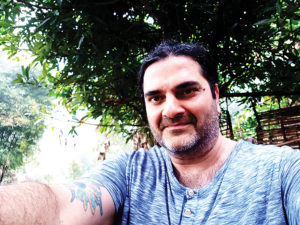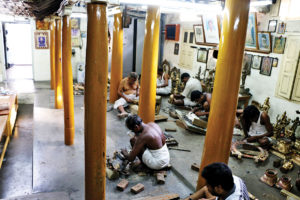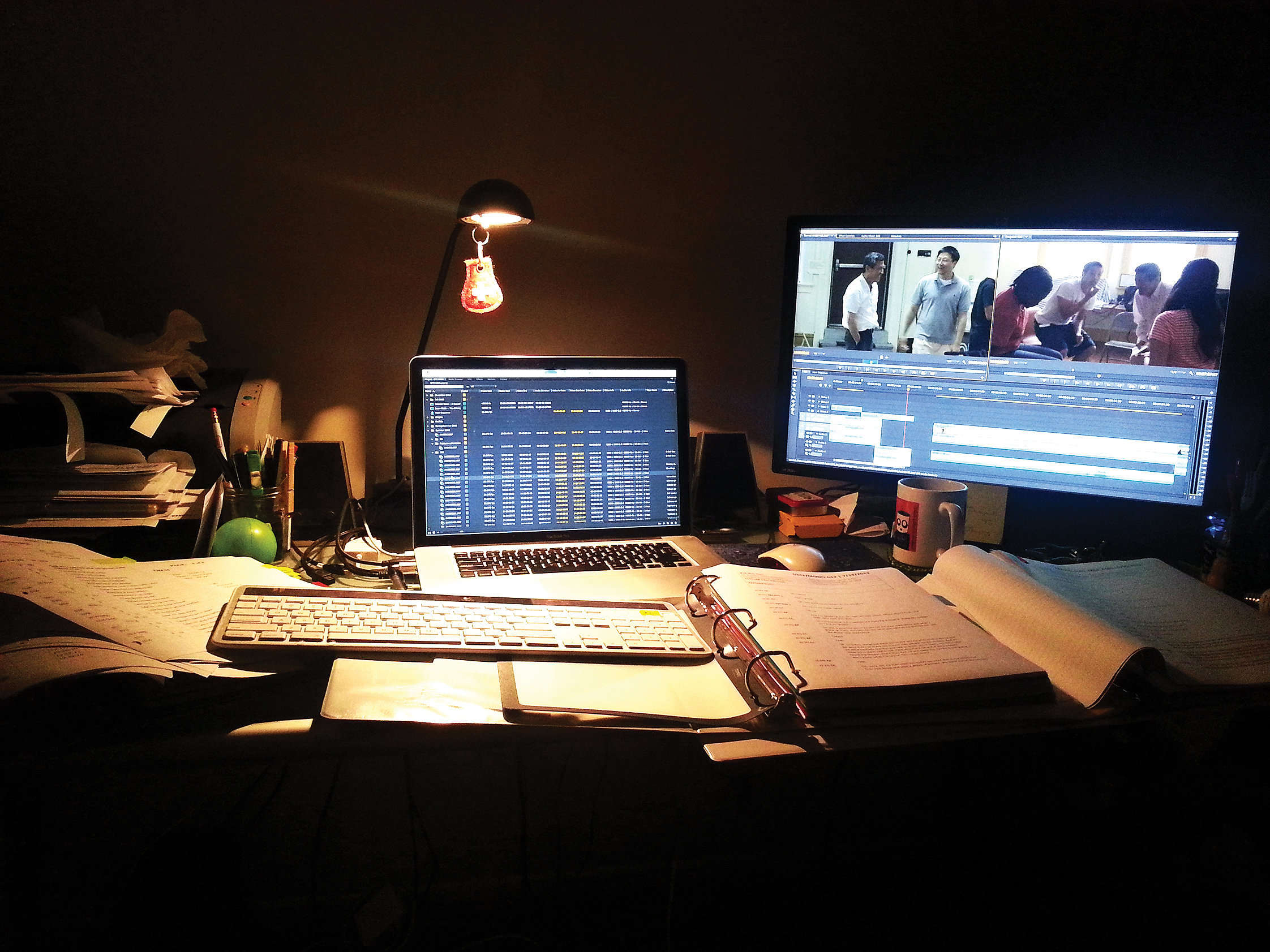A first-hand experience of working with a few dogdy artists in Mumbai gives a peek into the hidden aspects of the glitzy film industry
“Don’t do it. You’re crazy!” exclaimed a friend in New York when I told him about my upcoming visit to Mumbai for the post-production of a documentary film. He recounted his experience working on a TV show as a field producer — one of its episodes was to be shot in India. And it was a horrifying tale.

One of the crew members was molested by a taxi driver, a locally hired cameraman went missing with a box of expensive lenses and a production coordinator got into a violent altercation with the American director, leading to a police enquiry that derailed the production and delayed the crew’s departure by a whole month.
I have relatives in Mumbai but had not really engaged with its ‘film industry’ — a rag-tag assortment of blatantly nepotistic family-run businesses, often with links to the underworld. which in the last decade had received a cosmetic makeover through alliances with Indian corporate houses and American studios. In recent years, Bollywood has also turned into a propaganda factory — churning out films which, according to many, are mere political advertisements.
I decided to go ahead with my plans anyway. After all, I was of Indian origin, had friends in Mumbai. Besides, it would be a great learning experience. Or so I thought.
My film was inspired in part by an exhibition held at a prominent museum in California, curated by the eminent art historian and Padma Shri awardee Pratapaditya Pal: a former curator at Boston Museum, Los Angeles County Museum of Art, Chicago Art Institute and author of over 40 books on South Asian art. Dr Pal is also the narrator in the film. The film’s producer Debashish Banerji is a friend and a professor at the California Institute of Integral studies and was immensely helpful with research and preproduction. Both Dr Pal and Dr Banerji were frequent contributors to a magazine on Asian art and culture that I published.

After getting the green light from our sponsors, Debashish and I traveled extensively across India and Nepal and accumulated a trove of compelling material for our film, showcasing the pedagogy and ritual praxis of traditional South Asian art.
I had reached out to a few people about hiring a Mumbai-based editor, as that is where one of my family homes is located. I was required to be in India to handle my father’s business affairs as he was seriously ill. Around the middle of September 2017, a mutual friend introduced me to an editor who had graduated from a film school in Pune only a few years back and had worked as an assistant editor for the film, Hindi Medium.
She was very keen to begin working on the project and said she would be ready to come on board by November 2017, as her current assignment would be ending then. I sent her a trailer we had cut, which she liked immensely. She said that she was fascinated by the subject matter and was looking forward to working with me as it would be a great learning experience. I liked her enthusiasm and decided to give it a try, despite her lack of experience.
Sloppy schedules
In October, she mailed me saying she would not be able to take on the project till the end of the year as her current assignment had been delayed. She proposed hiring an associate editor who would sort the footage and assemble sequences till she could step in and take over. I said I could work with her if the associate was competent and we could finish the job by the year end. She later informed me that she had hired a person to assist her. I reached India in November, met the two of them and handed over the hard drive with all the raw footage.

About a month later, the assistant informed me that her drive had crashed and all the work she had done was lost. In mid-December I received a deeply apologetic email from the editor saying that the assistant was incompetent, had turned in very sub-standard work and she would not be able to work with her anymore. Three months had passed by and no work had been done. This editor put the entire blame on her assistant, who I suspect would describe a different version of the story, if asked.
Furthermore, she was getting married and could not predict how long it would take to finish the job. A minimum of six months, she estimated. If I could bear with her, she would work on it periodically, when she got time off her day job and “personal commitments”.
The email sent up several red flags, but I did not know what to do at that point as I had already lost three whole months and had promised my producer that I would have a final cut ready by new year’s day. I spoke to friends and family about this mess and showed them her mail. Everyone advised me to look for another editor.

My sister had faced great odds to become the national award-winning art director she is today, so I am extremely sympathetic to women trying to carve out a niche for themselves. So, I decided to give her the benefit of the doubt and retain her services.
After trying unsuccessfully for weeks and leaving multiple messages, I finally got her on the phone around Christmas time. She told me that she would begin working on the film by January 9 and deliver a rough assembly or a few coherent sequences by the end of January.
Another month went by. On January 29, 2018, I asked her if she had an assembly ready. She said that she only had a rough sequence of 30 minutes for me to look at and she had only started working “a few weeks ago”, after mailing me a proposed outline. She asked me to meet her to decide a plan forward as she would be passing through Mumbai for a day.
A few days later, she postponed the date that she had earlier fixed for meeting me and asked me to process her payment. But I said that we would discuss payment modalities when we met in person.
Finally, we agreed that after deducting food, travel and studio costs, she would get Rs 2.6 lakh for editorial. I decided to be generous and give her Rs 1 lakh upfront. The balance was to be paid when we had a ‘final cut’ or when the film had been edited to my satisfaction and only minor technical work remained.
She came up with another bizarre request, asking me to pay for the assistant she had told me was impossible to work with. I said it was entirely her responsibility as she had hired the assistant in the first place and besides, I had lost a lot of time due to her bad judgment.

A few days later, she informed me that she was traveling to the US towards the middle of May so we would need to finish in two months as the studio was only available from March 5.
Nearly six months had elapsed since we first got in touch about the project and editing had still not started in earnest. It had become an albatross around my neck and a big embarrassment. I did not know how to explain the situation to my sponsors back the US.
On March 1, I electronically transferred Rs 1 lakhs — the first installment — in her bank account.
From March 5to April 5, we worked on the film in a rented studio in Andheri, a suburb of Bombay. At the end of four weeks, I realised that the film needed a substantial amount of additional commentary and several changes in the narrative structure to accommodate the new commentary. The film was nowhere near completion.
The editor disappeared again and I was unable to get in touch with her for a while. Meanwhile, Prof Banerji was recording the commentary. When the editor finally surfaced she told me that she had been moving house. This was the third time she had moved house in six weeks, according to her.
In the first week of May, she informed me that she would be renting a laptop as she did not own one and would not rent a studio as she needed to keep the balance for herself. And she was scheduled to leave for the US in some weeks for which she presumably needed money.
From viewing the film in its current shape, I could tell it needed at least another 6-8 weeks of focused work, if not more. It was nowhere near the ‘final cut’ that we had agreed to as a pre-condition for releasing the second installment. There was no way she could finish the project on a rented laptop in a couple of weeks before leaving town. Assuming she had me over a barrel, she said she would not send me the project files that I needed to resume the edit unless I wired her more money.
By this time I had lost eight whole months on the project.
I decided to cut my losses and extricate myself from the unhealthy situation as fast as I could. I approached an old friend, a veteran editor who at the time was working on a film I had shot in Mexico. He agreed to take on the job.
As luck would have it, we ultimately decided to throw out the existing assembly, start from scratch and re-edit the entire film. Therefore the project files were not required any more. However, I had to fork out double the money I had budgeted for the job to pay my new editor. It was an expense I could ill afford but had no choice in the matter. We finally got the job done by July 2018.
The Bollywood nightmare did not end there.
Discordant notes
My editor referred me to a sound mixer based out of a post-production studio in the Mumbai suburb of Santacruz, who had worked on a number of Bollywood potboilers, including a film called Raees. I approached him with two documentaries to mix, one of which I had filmed in Mexico and the other described above. The first one went off relatively smoothly and I paid him promptly. The second film needed more work as some sections had patchy sound recorded on location and others needed original music.
After he sent me the final mix, I realised I would need to have original music scored for the film. I hired a music composer in Mumbai on August 20, briefed him, informed the mixer of the same and left for Hanoi (Vietnam) the next day to work on a television pilot for a French network.
When the composer emailed the music files to me on September 7, I forwarded them promptly to the mixer. He sent me a series of WhatsApp messages saying I was “exploiting” him as the tracks were not premixed. The composer informed me that he normally sent unmixed tracks to sound designers since that is how they preferred it.
When I conveyed this to the mixer, it seemed to unsettle him further. I could not fathom his behaviour and in light of my previous experience with Bollywood technicians, I decided not to work with him anymore.
Accordingly, I informed him of my decision. He wrote back to me saying he was willing to finish the job but he would have to charge me extra, almost double, given the new soundtrack.
At no time prior to this email had he mentioned the extra charge. On September 10, 2018, I sent him a mail saying I could have tracks premixed elsewhere and send it to him for final mixing or pay him for the existing work and finish the job elsewhere, as I had already gone way over budget and needed to keep my expenditure within bounds.
My email read: “So here’s where we stand as of now: I can have my guy send you the premixed tracks so you can do a final mix — or you can send the existing output to him so he can complete it. You will get paid your dues.”
At this point he completely lost his bearings and brought up a confidential email exchange between myself and my editor that he was privy to, using it to claim that I was “insulting Indians”, when in fact the email did not imply that even remotely.
After that he went on a rampage looping other people into the email thread, ‘warning’ them about me and pestering anyone who had been remotely associated with the project. No one responded to his unhinged mails, not having the time or inclination to get involved in a schoolyard spat.
On September 11, I once again reminded him of the mail sent to him the previous day offering him the full amount in return for work already done. It did not seem to register.
He continued emailing and pestering my editor and the music composer.
Again on September 12, I reminded him of my previous emails offering him the amount owed, told him to send me an invoice and said if he persisted with the trolling and harassment I would have to report him to the appropriate bodies and have a word with my lawyer as to the best course of action.
He sent me the invoice and I transferred the money the same day. But the harassment did not stop there.
He started posting libelous and ad hominem comments in a social media group run by a Mumbai-based hairstylist. Soon a posse of Indian trolls gathered around his post, tagging me and generally doing what trolls do. I have learnt a long time ago that the most effective way to get rid of trolls is to act like they don’t exist, and that is exactly what I did. It had the desired effect: the trolls crawled back into their holes.
On October 16, 2018, I received another email from the sound mixer, behaving as if nothing had happened, and asking if I needed an audio backup of the two jobs I had hired him for. I replied in the affirmative, saying it would be useful to have backups. He wrote back saying the files were extremely large, nearly 60 gigabytes in size. I told him I would have a hard drive delivered to his place.
After that I never heard from him again.
There were a few more glitches along the way but I managed to reach the finishing line in one piece. It had taken me over a year to complete the job — a task that would have taken no more than 3-4 months anywhere else in the world.
Cautionary tale
To cut a long story short, we now have a compelling film that showcases some extremely talented indigenous artists from the subcontinent. We have been invited to screen it at leading universities and cultural venues in the US, India and Europe, and will soon be doing the rounds of film festivals.
Sadly, it is because of stories like mine that foreign productions are wary of engaging with Mumbai’s film industry and shy away from doing any serious post-production work in the city.
When I recount the story to friends in India, they smile sympathetically, saying that I’m ‘soft’ from having lived abroad most of my life and had it easy compared to what they have to go through on a regular basis! All I can say is I’m grateful I do not have to live in a place where this type of behaviour is par for the course and feel sorry for those for whom it has become a habit.
Thankfully, there is a lot more to Mumbai than its dodgy film industry, and lots more to India than Mumbai. There are definitely plenty of talented and trustworthy folks in B-town, but it can be a chore to sift them from the losers.
I have long since moved on from Mumbai and from the events described in this article. I wrote this piece as a cautionary tale for others who may not know what they’re in for. Forearmed is forewarned.
Mumbai city is comprised of myriad worlds within worlds and can teach us more about the human condition — and about ourselves — than we could possibly imagine. But there is a price to pay. You may end up asking if it is all worth it in the end. I would like to stay hopeful and think that it is.
www.newslaundry.com





